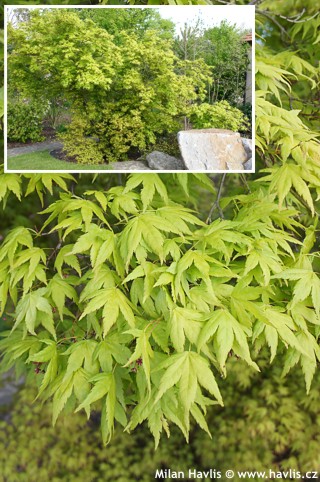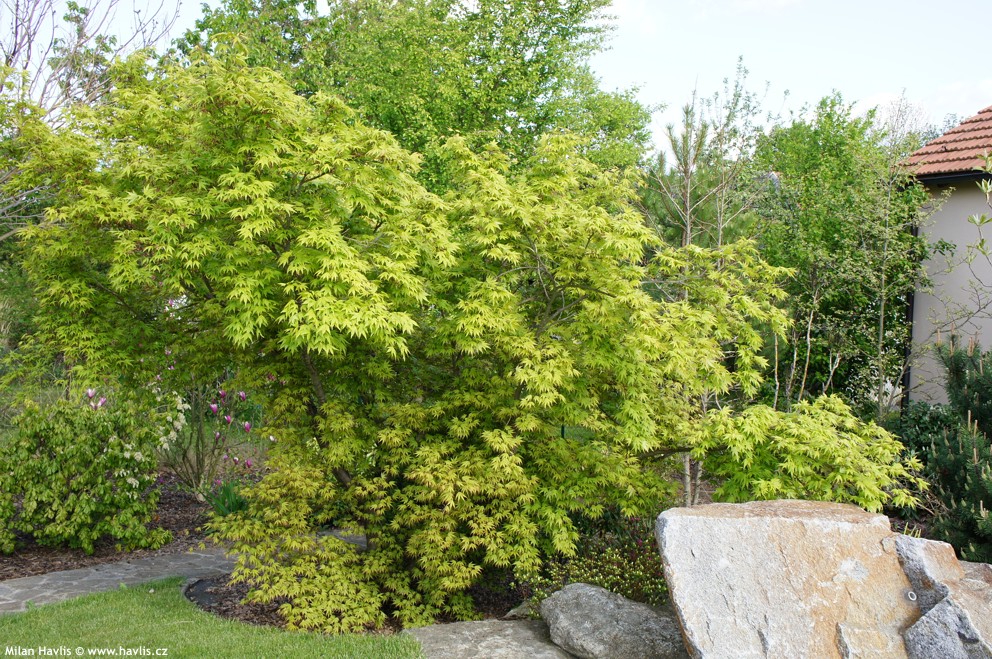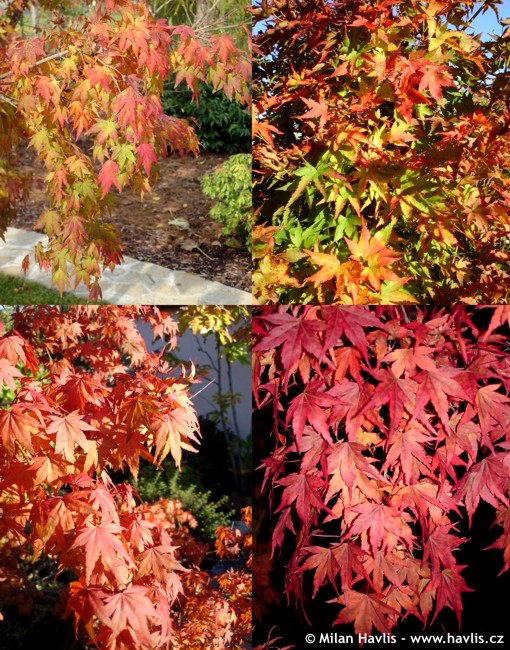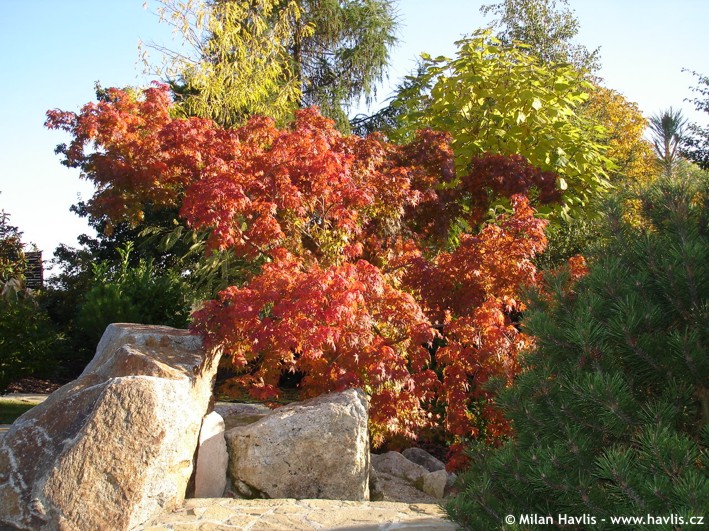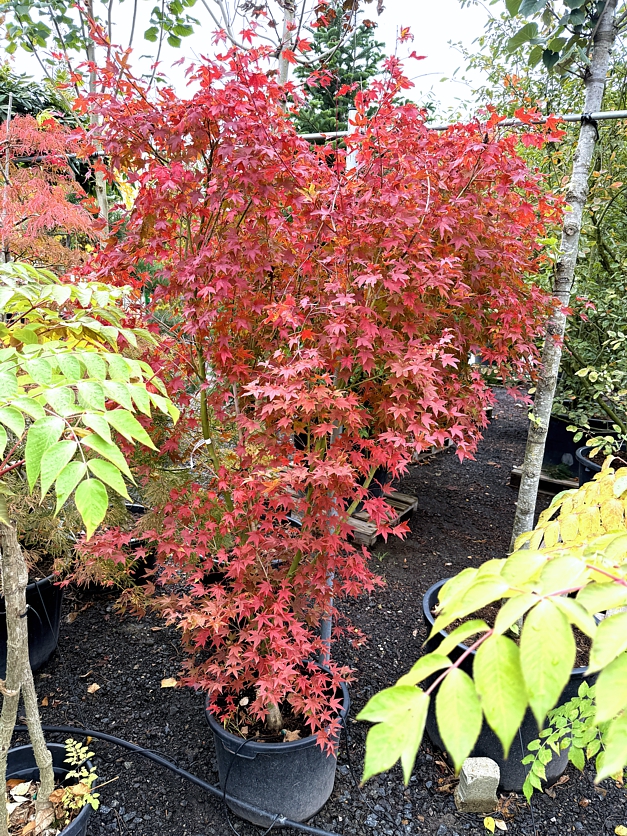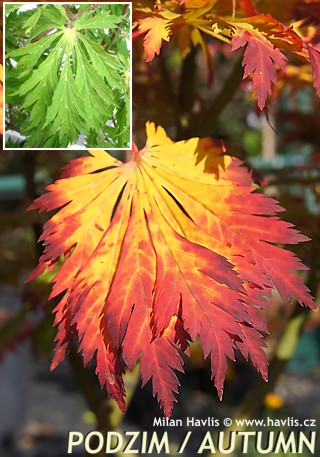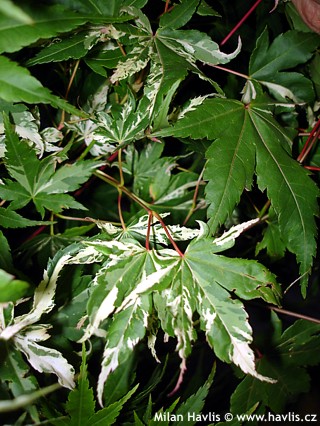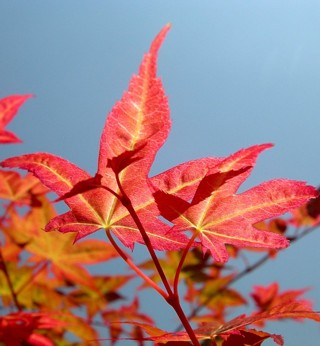Acer palmatum Japanese maple


Acer
Japanese maples are very decorative and usually low shrubs, occasionally small trees, with attractive foliage and picturesque structure. There are many varieties in various shades of green, chartreuse, golden and yellow, red to maroon, and even multicoloured (variegated). They originate from Asia (Japan, China, Korea), where they have been cultivated for at least two centuries or perhaps even longer, however, they were introduced to Europe only at the beginning of the 19th century, specifically to Great Britain in 1820. Interestingly, the botanist Carl Peter Thunberg described them much earlier, in 1784, because he undertook an expedition to Japan in 1775-1776, discovering new species and collecting seeds and plants. He named the tree Acer palmatum, referring to the leaf shape resembling a human hand with fingers, although it is said that they first reminded him of frog fingers, which is also one of its oldest Japanese names: kaede. The other is momiji (baby hands). The beauty of the colours and shapes of the leaves and trees is reflected in many arts, for example, in the oldest preserved collection of Japanese poetry from the 8th century, the Man'yōshū (Collection of Ten Thousand Leaves). The Chinese poet Wang Wei (699-759) celebrated their beauty in many of his works, and naturally, maples often appeared in ancient paintings, tapestries, porcelain, and wherever classic and traditional decorations associated with the symbolism of these maples were desired: beauty and elegance, serenity, endurance, vitality, and transformation.
The species of Japanese maple is a green-leaved tree or rather a large shrub. End even though among landscapers and general green-finger-public the red-leaved versions tend to be more popular I suppose that this is the most beautiful and elegant tree of our climate. With its naturally green leaves it "plays no games" and shows what it is like to be a part of nature.
The leaves are deeply lobed, have 5 or 7 tips and offer a wide range of colours throughout the year should “just green” sound too boring to you. They are bronze as they emerge, changing to soft, mid green in summer, and turning golden, orange, pink and purple in autumn.
It grows slowly about 3-4m tall and wide, and forms a multi-stemmed shrub with a canopy crown. Pruning is not needed, however, you can help younger plants achieve a mature shape sooner by clearing the numerous small twigs around the main vertical stems to about two thirds from the ground. Thus it will make a dense, irregular umbrella-shaped crown. It is an easy-care, hardy plant, which does not need much maintenance. It does well in full sun, too. It requires slightly acidic, semi-fertile, moist but well-drained soil to establish extensive root system. Young plants need mulching for winter.
This maple deserves more attention especially by landscapers who offer plants for customers´ gardens as it is an easy and fully hardy plant in our climate that, owing to its slow growth rate and reduced size, is ideal to any, even the smallest of gardens. Fully hardy to USDA zone 5b (about -28°C).
Last update 31-12-2007
Goods are shipped all over Europe. For Russia and U.K. and for further details please read about SHIPPING OPTIONS HERE.
Are you interested in a serious discount for orders NOV-FEB? Check your options here.
THE PRICES INCLUDE VAT of 15%. For quick conversion you can use 1 CZK = approx. 0.04 EUR
- STANDARD QUALITY - Plants of this group are 1st class quality with number of branches and overall density adequate to their size and age, considering they were container grown.
- DE LUXE QUALITY - This label guarantees a luxurious quality of manually selected plants that, compared to their height and age, are exceptionally dense and beautiful.
- EXTRA - These plants are usually mature and bigger specimens with exceptional overall appearance.
- STANDARD (as described in the plant form) means a tree with a trunk of 190-210 cm and a crown at the top, unless specified differently. The commercial size for trees is their girth measured in the height of 1m from ground.
- HOBBY - These plants are of the same quality as our standard-quality plants but younger and therefore cheaper.
- SHRUB - a woody plant with branches growing bushy from the ground level.
- HALF-STANDARD or MINI-STANDARD - a small tree with shorter trunk, its size is usually specified.
- FEATHERED - These are trees with branches growing already from the base of the trunk and up along the stem.
- GRASSES and PERENNIALS - Sizes given usually read the diameter of the pot or the clump, as specified.

































